After spending two weeks road tripping around Spain, it wasn’t until Barcelona that I went on a food tour. Something that would have been helpful during my first introduction to Spanish cuisine. Not to say I’ve never had Spanish food before but when you’re in another country, it helps to have an expert show you the differences between your empanadas and paellas – especially when you’re a pescatarian! So I enlisted in the help of Devour Barcelona to guide me around and give me the insider’s scoop on the best grub in Barcelona’s Gràcia neighborhood.
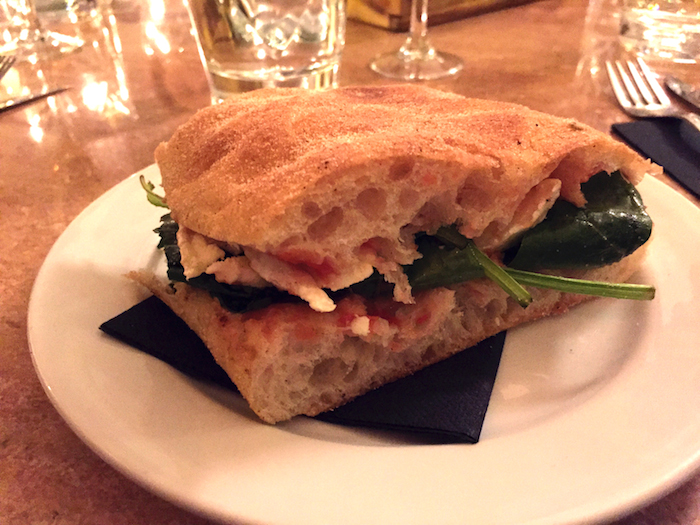
The morning started with a little bubbly and bread – who could complain about that! At Cafe Pagès (Torrent de l’Olla, 27), we sipped on cava while enjoying some savory sandwiches. For the carnivores, they had a grilled botifarra and green pepper sandwich. Since botifarra is a type of Catalan sausage, mine was substituted with goat cheese, spinach and tomato.
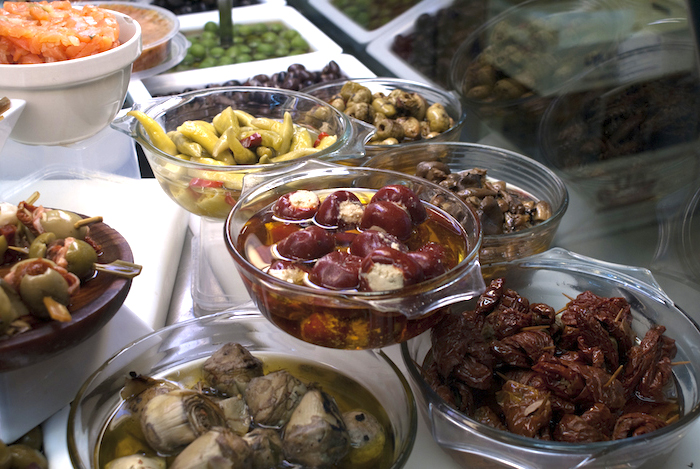
After devouring a sandwiches and drinking our cava, we headed to Mercat de l’Abaceria Central (Travessera de Gràcia, 186), one of Barcelona’s most authentic local markets. I was so excited when we stopped at the window displaying loads of olives. I love olives and Spain is an olive haven! We made a visit to two different vendors. First we sampled a skewer composed of olives, bacalao and sun-dried tomatoes.
Bacalao
Bacalao, or “salt cod,” is a staple in Spain, and has been for centuries. Salt cod is made from codfish which has been preserved by salting and then drying. Traditionally it was dried outdoors by the wind and sun, particular by fisherman bringing it back after a successful day fishing. Unfortunately due to overfishing, world stocks have declined and dried white fish are sometimes labeled as salt cod where they are not in fact cod.
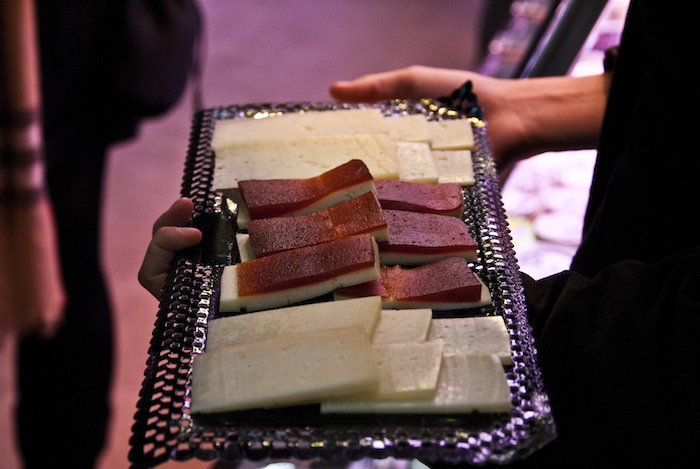
Next stop was sampling a selection of Spanish and Catalan cheeses. We also sampled one cheese with ate de membrillo, also called quince paste, as it is made from the quince fruit which is similar to a pear. The sweetness of the quince paste and the cheese was a perfect combination.
Still hungry? There’s more!
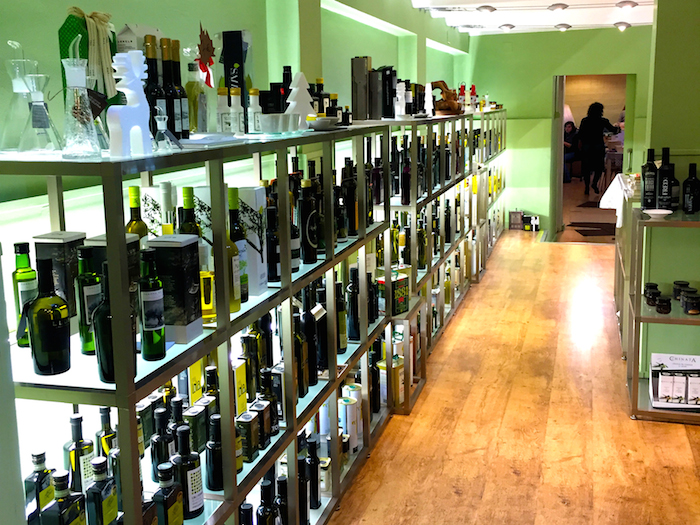
While it may seem a bit odd to be drinking olive oil, this is exactly what we did. Yes, we were given the option to dunk bread in the oils but I went for the pro-version, I tasted au naturel! Three olive oils were on deck to taste. Each had a different and unique flavor. The shop was lovely and definitely worth buying some of the many Spanish olive oils available.
Fun Fact
When you think of olive oil production, many think Italy and Greece as being the leader’s world producers. Wrong. Spain produces 43.8% of world production of olive oil. Italy produces 21.5% and Greece accounts for 12.1% of world production.
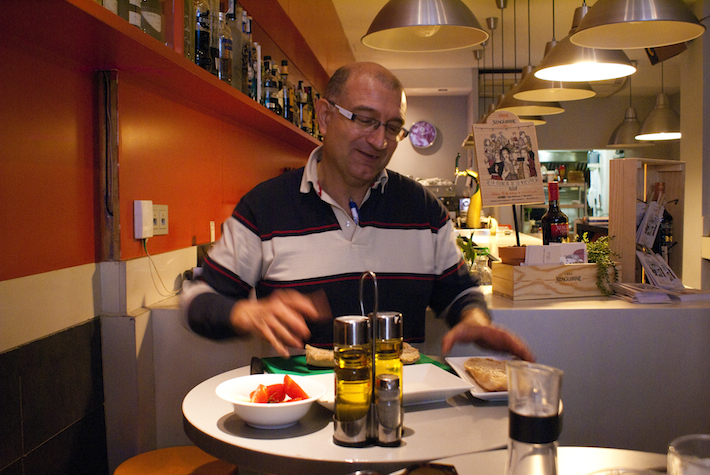
The food tour of the Gràcia neighborhood wouldn’t be complete without a visit to the small, family-run restaurant L’Anxoveta (Carrer de Sant Domenèc, 16). The owner shows us how to make pa amb tomàquet, or pan and tomato bread. It is rather simple. Just rub garlic and tomato on glass bread, which is a long, flat ciabatta bread with a very open texture. Douse with olive oil (the good kind of course) and then sprinkle with salt. This is a common Spanish food that is found on almost any menu.
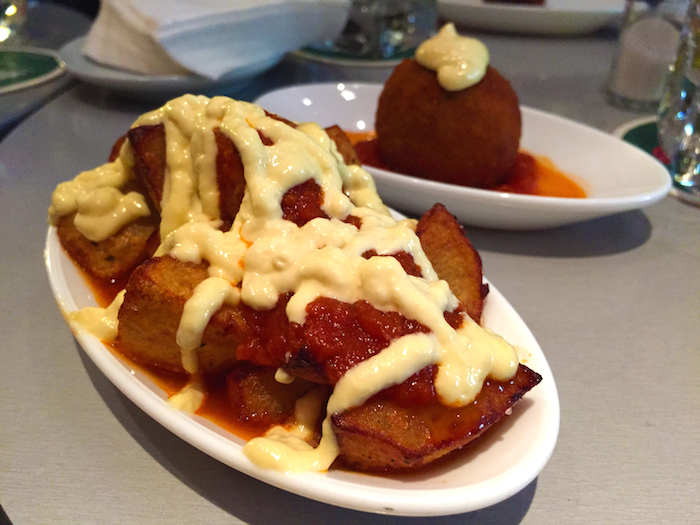
Next we were given the chance to try a bomba de patatas. This round little croquette is made of potatoes and ground beef and served with brava sauce which is commonly served with patatas bravas. And, you guessed it, patatas brava is exactly what my vegetarian option was.
What’s with Patatas Brava?
Come to Spain and you will find patatas brava everywhere! Also called papas bravas, the common tapa dish is native to Spain. It consists of white potatoes cut into irregular shapes of about 2 centimeters, then fried in oil and served warm with brava sauce, a special sauce made of spicy tomato and/or aioli.
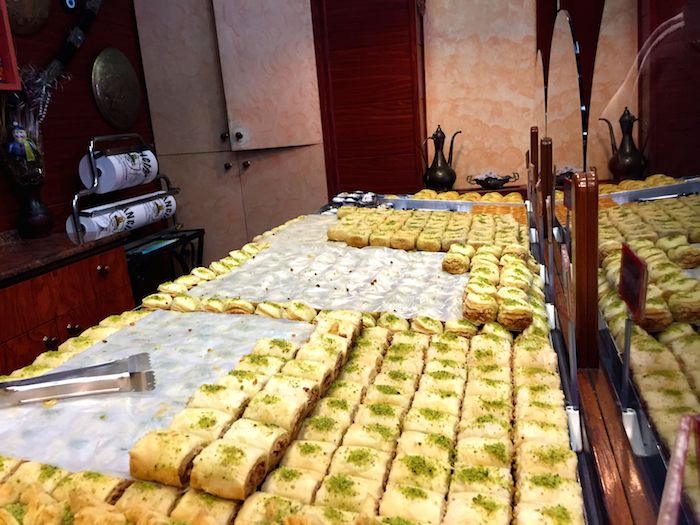
After all that salt, it was time for something sweet. We headed to a Syrian pastry shop called Pastisserie Principe (Carrer de les Guilleries, 10). We were each given the chance to select any pastry in the shop that we wanted. For me these pastries were reminiscent of my recent visit to Istanbul. Even though my stomach was on the verge of what I refer to as a “food baby” I couldn’t resist trying one of the pastries. And all I can say is… yummmmmm.
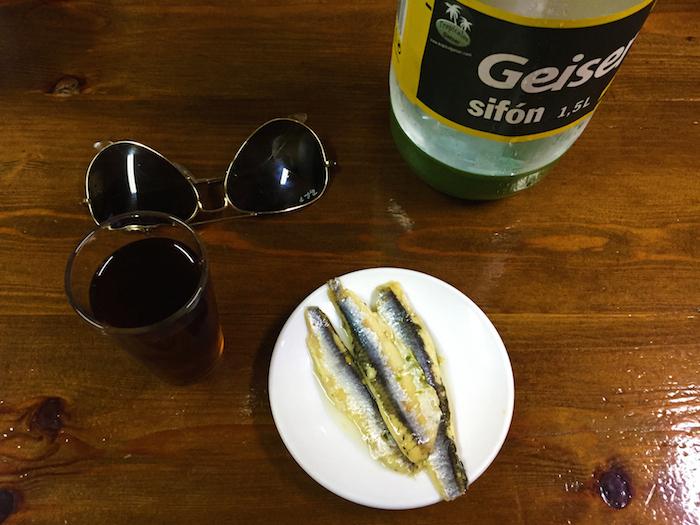
Those who love anchovies would be thrilled to stop at one of the oldest bodega’s in Gràcia Bodega C’al Pep (Carrer Verdi, 141) where you can enjoy some pickled anchovies. Seeing as anchovies completely repulse me, I passed and decided to sip on the vermouth that we were served. Recently in Barcelona, vermouth has made a comeback as the Catalonian youth have started sipping on the drinks of our grandparents. Say vermouth and what comes to mind is a martini, at least in my case. However, here it is not served as a mixer but rather sipped out of a shot-sized glass accompanied by a giant bottle of seltzer water. Straight up, on the rocks, twist, no twist, seltzered or unseltzered, it is however you fancy.
Not finished just yet. More grub on the way…
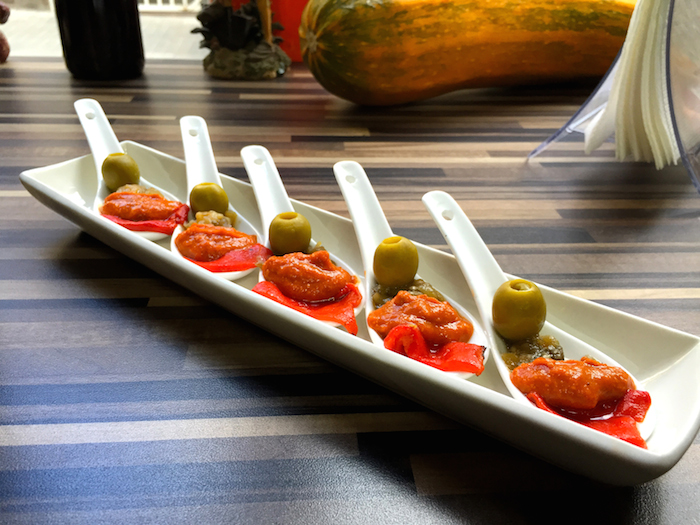
After visiting the oldest, it only seemed appropriate to visit the smallest! So we made a stop at La Botigueta del Bon Menjar (Carrer de Santa Àgata, 18-20). This half-restaurant, half-shop is so tiny there are only four small barstools clustered in front of the display case. On the menu was escalivada with romesco pintxo, which is essentially grilled vegetables with a red sauce. Served “sans bread” on a spoon was the perfect way to enjoy.
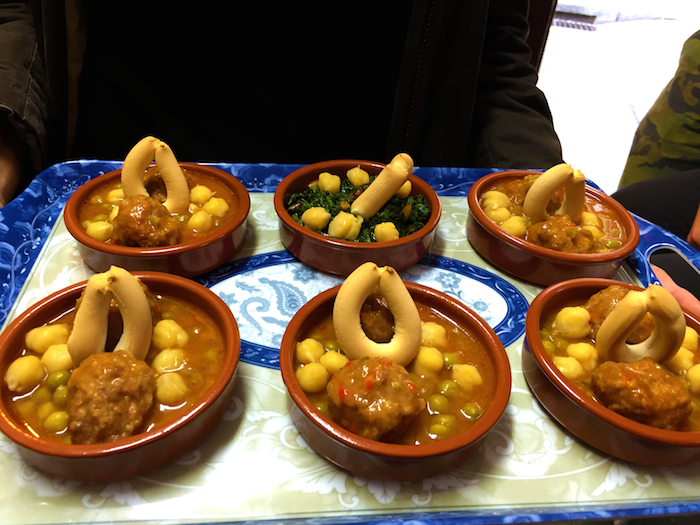
This was followed by homemade meatballs in a bean and pea gravy. My substitution for meatballs was some sort of spinach concoction which I really enjoyed. The tour group huddling around in the mini restaurant shop was a cool way to experience another taste of Spain.
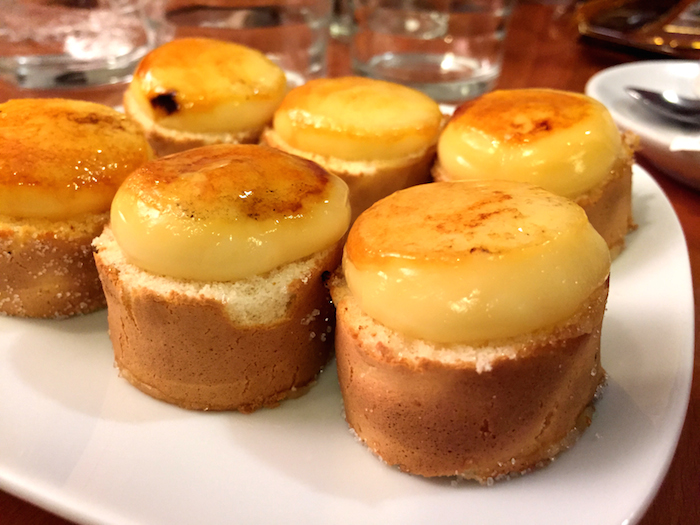
Last, but certainly not least, was Pastisseria Ideal (Carrer Gran de Gràcia, 207), an old, family-run bakery. We sampled a Catalan specialty called cremat, which is similar tocrème brûlée; but instead of being made entirely by cream, it is part cream, part milk. Pastisseria Ideal puts a small spin on the class cremat by wrapping it in a little cake. Bit-sized portions were prepared especially for us. Sipping on coffee and enjoying the delicious little treat was a perfect way to end the tour.
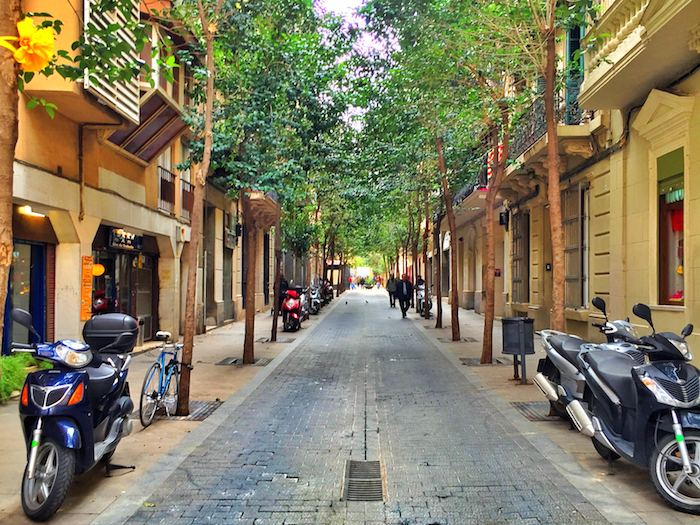
Taking a food tour was an incredible way to sample different specialties of the Spanish cuisine while getting to know the Gràcia neighborhood. I couldn’t imagine a better food tour than Devour Barcelona. Our guide was informative, knew every restaurant and shop owner, and intertwined fascinating culture and history about the Gràcia neighborhood into the tour.
A big thank you to my tour guide Renée and Devour Barcelona for an amazing tour! This tour was provided complimentary by Devour Barcelona. All opinions are my own and anything I receive on a complimentary basis does not guarantee favorable reviews. I am always completely honest.
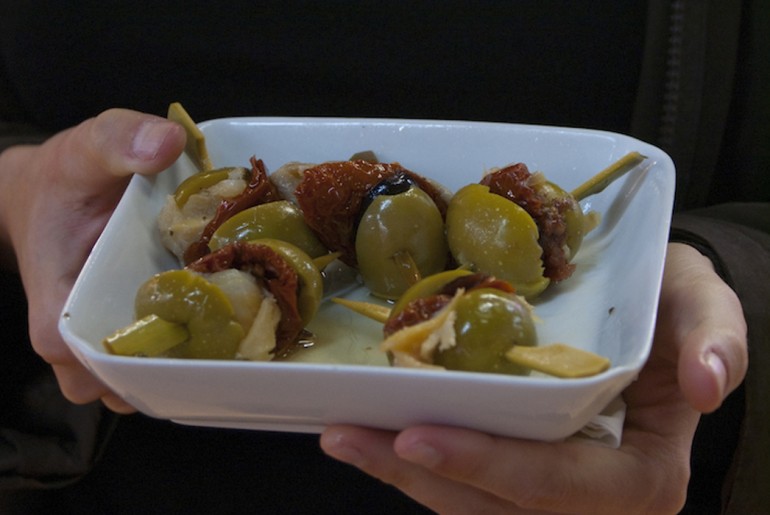
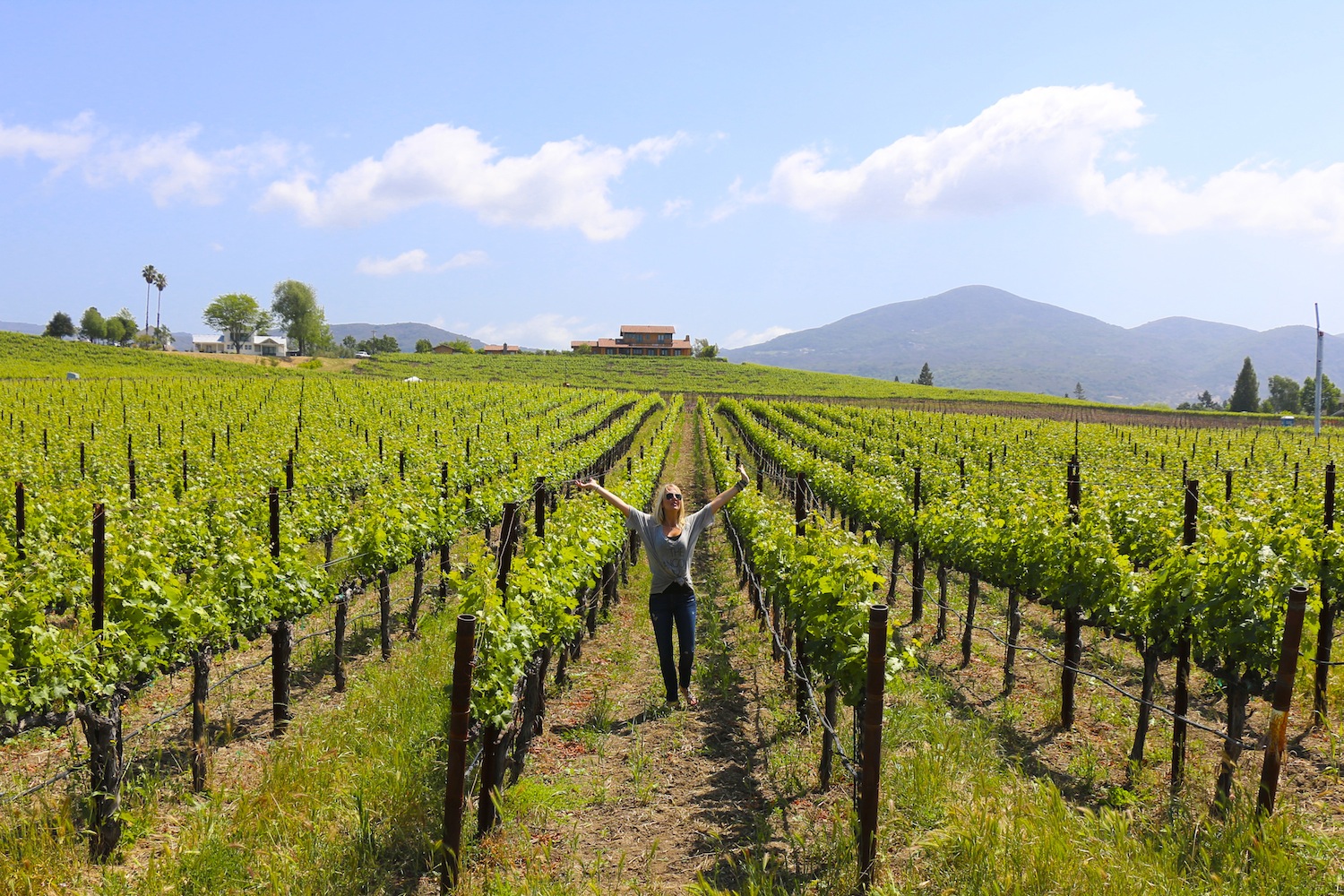
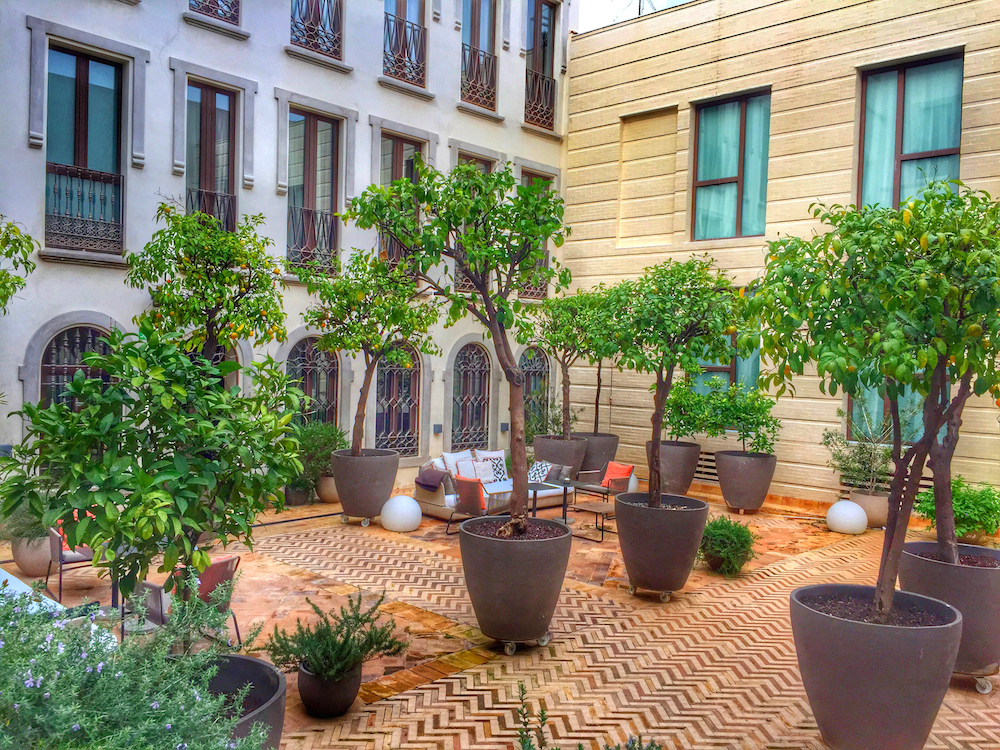
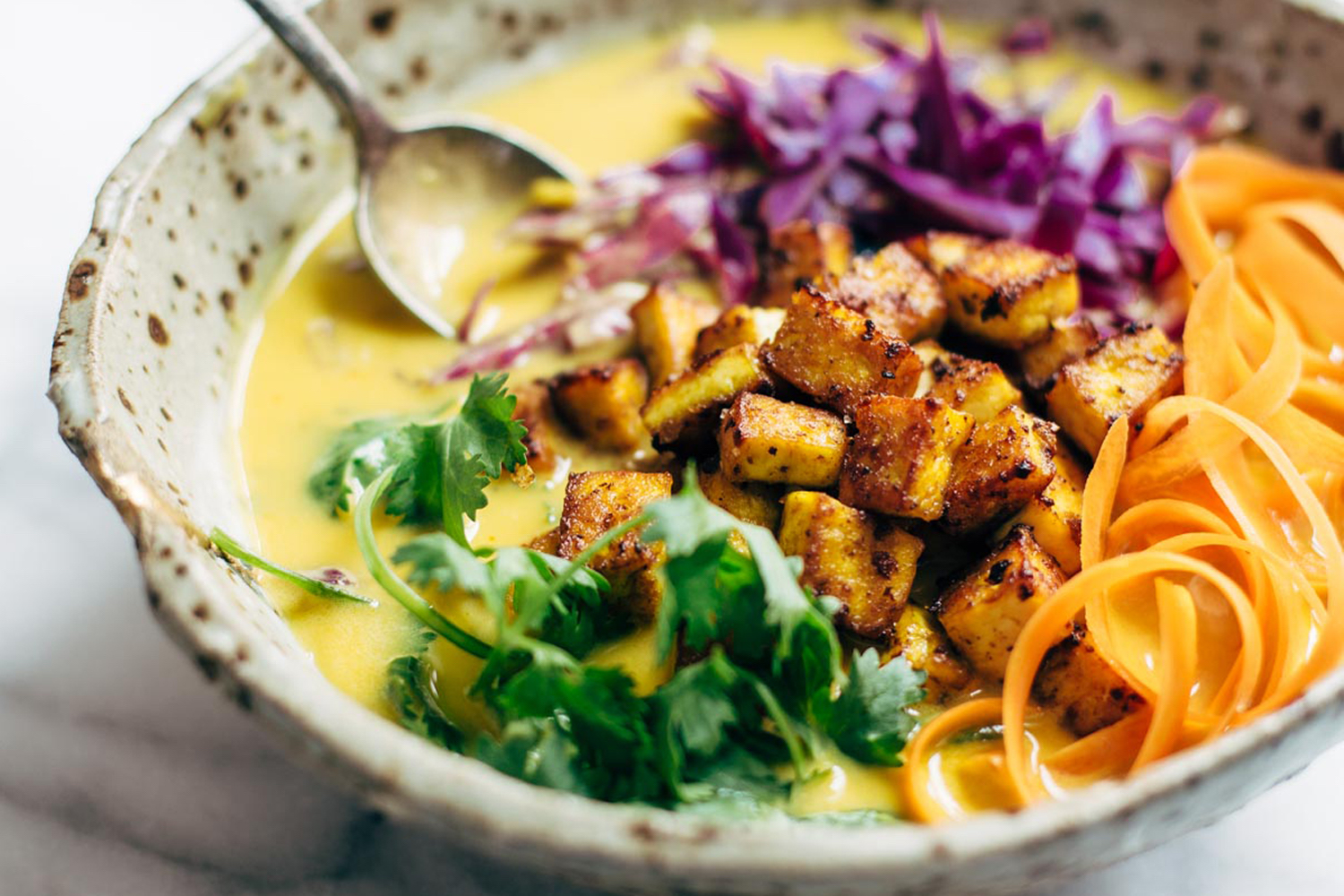

You are giving me so many options for my honeymoon! Loved this post!
Thanks Rachel! Barcelona is an amazing and would be an incredible honeymoon destination!
Thank you Krista for a lovely review! So glad you enjoyed it and looking forward to seeing you in Europe again soon! Safe travels!
Thank you for being such an incredible tour guide! You were wonderful and I loved every minute of the tour!
Thank you so much for joining us in Barcelona! Your pictures make me wish I were there instead of Madrid!
Thank you for inviting me to join! I wish I would have known about your food tours when I was in Madrid. Such a great way to not only try food but get to know the city. I hope to be back in Spain again soon!